Happy New Year in Different Languages: A Guide for Global Businesses
As the clock strikes midnight and fireworks light up the sky, people worldwide celebrate the start of a new year. Have you considered how to say “Happy New Year” in different languages?
In our globally connected marketplace, this knowledge is a vital business asset. Understanding various cultural celebrations can provide a competitive edge for your business.
Whether fostering client relationships, launching products in new markets, or building international teams, knowing essential Happy New Year greetings in different languages enhances communication.
Let’s learn the key phrases and cultural insights to improve international business interactions.
Happy New Year Greetings in European Languages
As Europe celebrates the New Year, each language adds a unique charm. “Happy New Year” greetings in different languages reflect diverse traditions. Let’s explore how Europeans express their hopes for a prosperous year.
-
French:
French Bonne Année is the common New Year’s greeting in France. Celebrations often involve festive meals with family and friends, featuring delicacies like foie gras. Cultural traditions include street parties and fireworks at midnight.
-
Spanish:
Spanish Feliz Año Nuevo comes with a unique tradition – eating 12 grapes at midnight. As the clock strikes twelve, Spaniards eat one grape per chime, said to bring luck for each month of the new year. Beyond the grapes, celebrations include family gatherings, festive meals, and joyful exclamations of “¡Feliz Año Nuevo!”.

The 10 Strangest New Year’s Eve Traditions
-
German:
German Frohes neues Jahr celebrations combine traditional and modern customs. Germans welcome das neue Jahr with fireworks and the ritual viewing of ‘Dinner for One’ comedy sketch. In cities like Berlin, the Brandenburg Gate is a central gathering point where people exchange “Frohes neues Jahr!” and “Guten Rutsch!” (meaning ‘good slide’ into the new year).
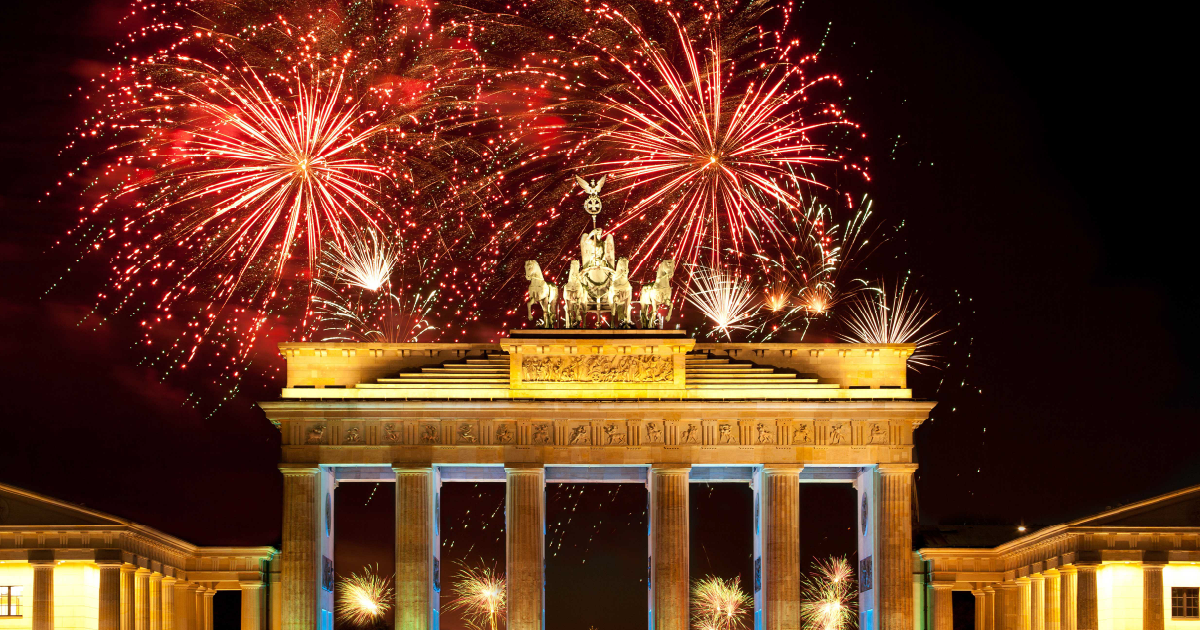
If you are planning to reach German-speaking communities, utilizing German translation services would be beneficial.
-
Italian:
The Italian Buon Anno celebration reflects the country’s vibrant spirit. While ‘Felice Anno Nuovo’ is the formal greeting, the cheerful ‘Buon Anno!’ fills the streets as families gather for festivities. In Venice, the LOVE festival features stunning fireworks over the lagoon, marking a magical start to the new year. Italians celebrate with joy, blending ancient customs and modern traditions.
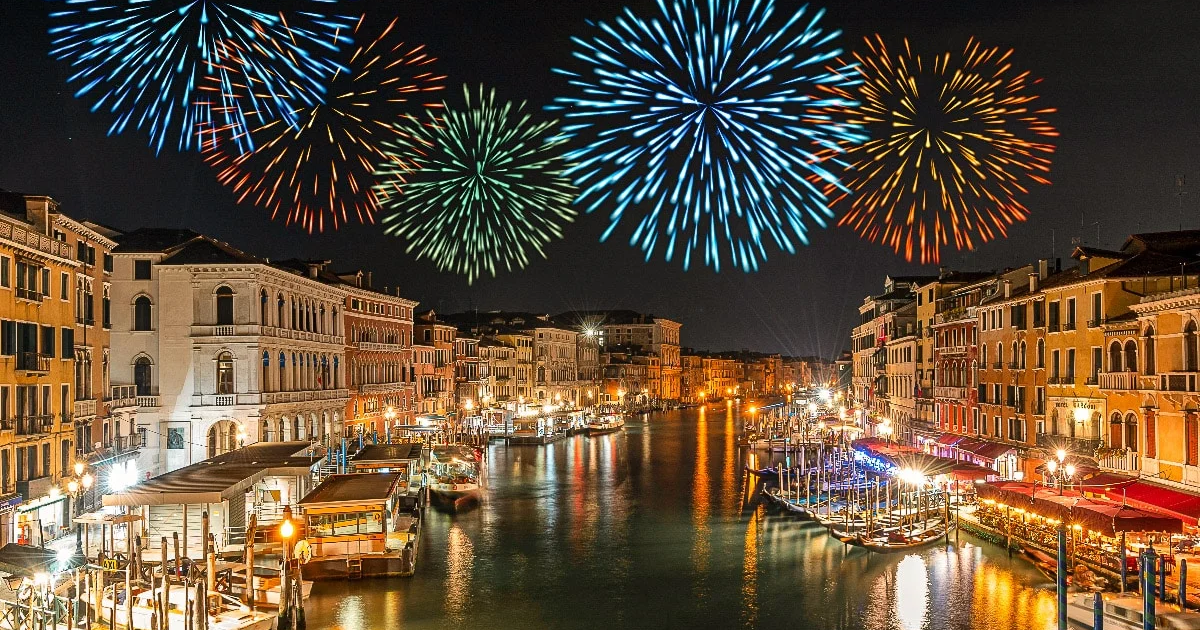
-
Portuguese:
Portuguese translation services often highlight the differences in ‘Feliz Ano Novo‘ celebrations between Portugal and Brazil.
In Portugal, traditions include eating seven pomegranate seeds for prosperity, while Brazil features customs like wearing white and jumping seven ocean waves for luck.
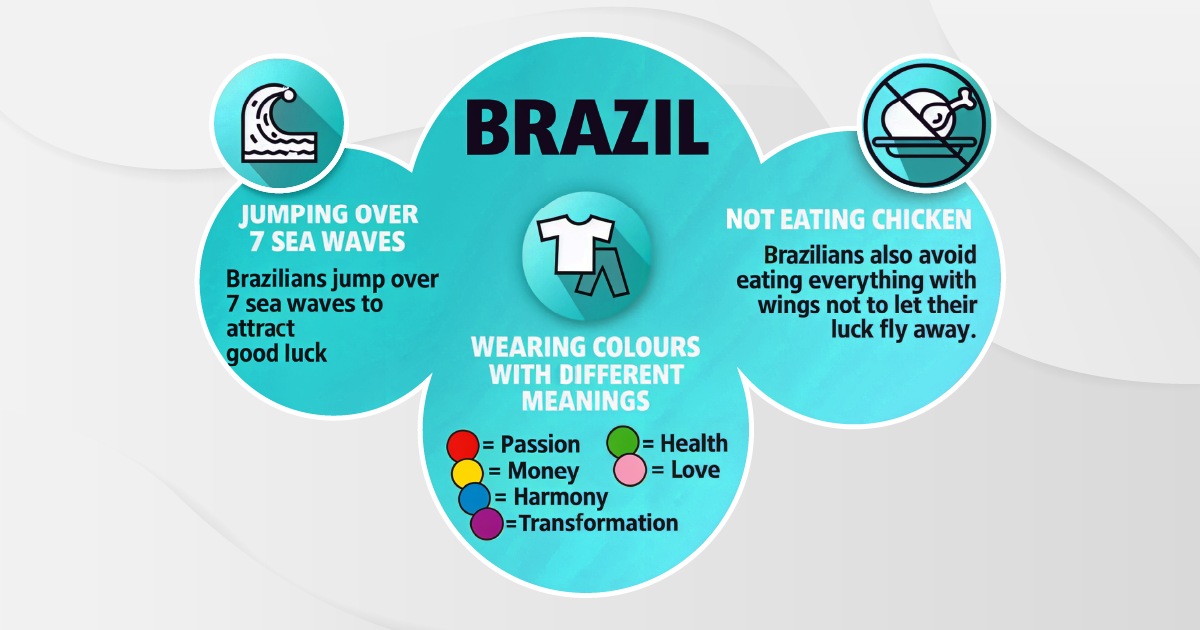
Both cultures enjoy fireworks and family gatherings, but Brazil adds tropical flair with beach celebrations. Whether in Lisbon or Rio, the Portuguese Feliz Ano Novo embodies cultural authenticity.
-
Dutch:
The Dutch Gelukkig Nieuwjaar combines timeless traditions with modern celebrations. Families enjoy oliebollen (donuts) and appelflappen (apple turnovers) before a spectacular fireworks show at midnight.
The Oud en Nieuw custom emphasizes clearing out the old year while sharing ‘Gelukkig Nieuwjaar!’ wishes. This festive blend of food, fireworks, and fresh starts marks the Dutch New Year celebration.
-
Swedish:
The Swedish Gott nytt år celebration captures winter’s charm with elegant traditions. Dressed in their finest attire, Swedes gather with family and friends to exchange the heartfelt greeting ‘Gott nytt år’ as midnight approaches, often accompanied by fireworks. This celebration reflects Sweden’s blend of modern festivities and cultural heritage.
-
Norwegian:
The Norwegian “Godt nytt år” celebrates family reunions on Nyttårsaften (New Year’s Eve) with fireworks and the exchange of greetings. The festivities continue into Nyttårsdag (New Year’s Day) for rest and reflection. While sharing cultural ties with other Scandinavian countries, it retains its unique Norwegian customs and traditions.
-
Polish:
The Polish greeting ‘Szczęśliwego Nowego Roku!‘ (pronounced shcheyshlivego novego roku) carries the warmth of Polish New Year traditions. This heartfelt wish is central to family gatherings and celebrations, which often include festive meals and fireworks that light up cities across Poland. The phrase may be difficult for non-Polish speakers, but it represents hopes for happiness and prosperity in the new year.
-
Greek:
The Greek celebration of Καλή Χρονιά (Kalí Chroniá), meaning ‘Good Year,’ combines ancient traditions and modern festivities. As Greeks exchange this greeting, they often engage in games of chance, believing they bring luck. The celebration features traditional foods like vasilopita, and a New Year’s cake with a hidden coin, while families share wishes of prosperity and happiness for the year ahead.
-
Turkish:
The Turkish Mutlu yıllar celebration blends modern and traditional customs. As midnight nears, people exchange greetings of ‘Mutlu yıllar!’ and enjoy festive meals with loved ones. Many participate in lottery drawings, while cities like Istanbul light up with fireworks over the Bosphorus.
Having explored how to say Happy New Year in different languages across Europe, let’s journey eastward to explore Asia’s diverse linguistic landscape
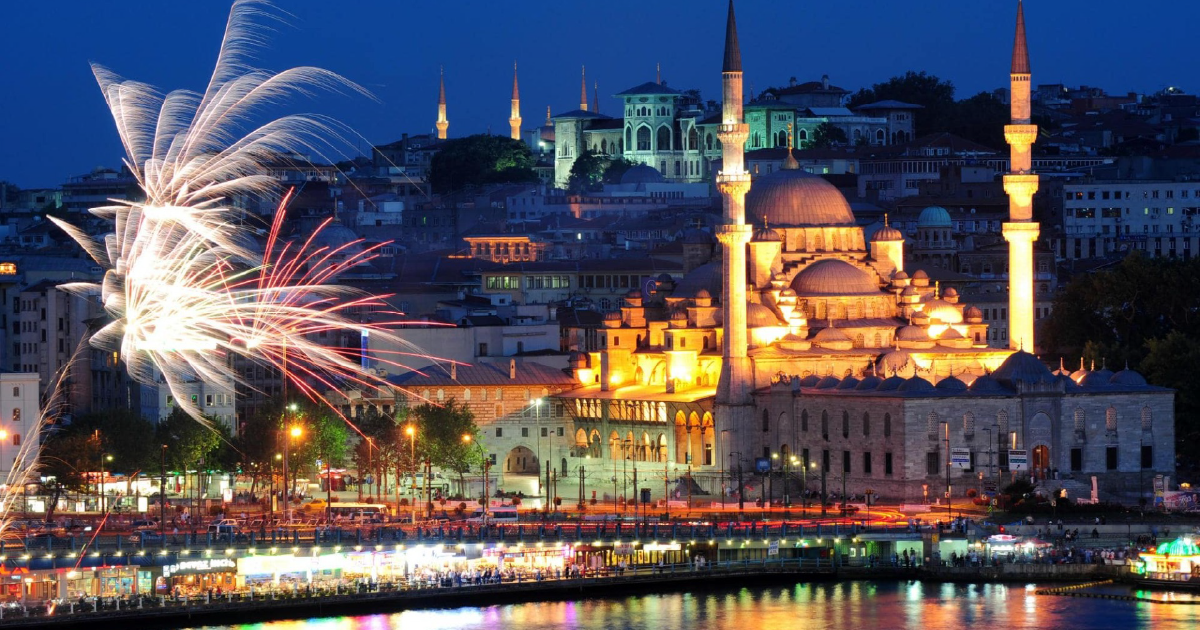
Happy New Year Greetings in Asian Languages
New Year celebrations in Asia showcase diverse cultural traditions, with each region having its own unique ways to welcome the year. Some countries use the Gregorian calendar, while others follow lunar or traditional calendars. New Year greetings vary greatly, let’s discover some!
-
Mandarin Chinese:
In Mandarin, “Happy New Year” is “新 年 快 乐 (Xīn Nián Kuài Lè).” Tones are crucial in Mandarin, as they can change word meanings. Chinese New Year, or Spring Festival, begins on the first day of the lunar calendar, which was January 22, 2023. The celebration involves family gatherings, feasting, fireworks, exchanging red envelopes with money, honoring ancestors, and wishing for good fortune in the new year.
-
Korean:
In Korean culture, the New Year, called Seollal, is celebrated according to the lunar calendar in late January or early February. Families honor ancestors with rites, enjoy traditional foods like Tteokguk (rice cake soup), and play games. The common New Year’s greeting is “새해 복 많이 받으세요” (Saehae Bok Mani Badeuseyo), wishing good fortune for the year ahead.
-
Japanese:
In Japanese, a traditional New Year greeting is “明けましておめでとうございます (Akemashite Omedetou Gozaimasu),” which means “Happy New Year.” This phrase conveys good wishes and blessings to family, friends, and colleagues. Additionally, it’s common to give small gifts or money, known as “otoshidama,” particularly to children during this time.
-
Hindi:
The traditional greeting for the Hindi New Year is “नया साल मुबारक हो” (Naya Saal Mubarak Ho), meaning “Happy New Year.” Celebrated as “Nav Samvatsar” according to the Hindu calendar, it typically falls in March or April. This festive period brings families together for traditional blessings, home decorations, and gift exchanges to welcome prosperity in the new year.
Here’s a table of New Year greetings in various Asian languages:
| Language | Greeting | Pronunciation | Literal Meaning |
| Mandarin Chinese | 新年快乐 | Xīn nián kuài lè | Happy New Year |
| Japanese | 明けましておめでとうございます | Akemashite omedetō gozaimasu | Congratulations on the New Year |
| Korean | 새해 복 많이 받으세요 | Saehae bog manh-i bad-euseyo | Please receive many blessings in the New Year |
| Hindi | नव वर्ष की शुभकामनाएँ | Nav varsh kee shubhkamnaen | Good wishes for the New Year |
| Vietnamese | Chúc Mừng Năm Mới | Chuc mung nam moi | Happy New Year |
| Thai | สวัสดีปีใหม่ | Sawadee Pee Mai | Happy New Year |
| Malay/Indonesian | Selamat Tahun Baru | Selamat Tahun Baru | Happy New Year |
| Tagalog | Manigong Bagong Taon | Manigong Bagong Taon | Prosperous New Year |
Happy New Year Greetings in Other Languages
As businesses expand globally, mastering festive greetings in multiple languages becomes a valuable tool for building international relationships. Beyond mere translation, these New Year wishes to reflect cultural understanding and respect.
Here’s your guide to expressing “Happy New Year” across other major world languages, complete with pronunciations – essential knowledge for meaningful cross-cultural business communication.
| Language | Greeting | Pronunciation | Literal Meaning |
| Russian | С Новым Годом | s NO-vym GO-dom | Happy New Year |
| Persian | سال نو مبارک | saal-e no mo-baa-rak | Happy New Year/Blessed New Year |
| Armenian | Շնորհավոր Նոր Տարի | shnor-ha-VOR nor ta-REE | Happy New Year |
| Amharic | መልካም አዲስ ዓመት | mel-kam ah-dees ah-met | Happy New Year |
| Arabic | !عام سعيد | āman saʕīdan | Happy New Year |
| Swahili | Heri ya mwaka mpya | heh-REE yah m-WAH-kah m-PYA | Happiness of the new year Happy New Year |
Happy New Year in different languages reflects just one part of global diversity – what’s equally fascinating is that cultures worldwide celebrate their New Year at different times, from Chinese Lunar New Year to Thai Songkran in April, each marking their unique calendar of celebrations.
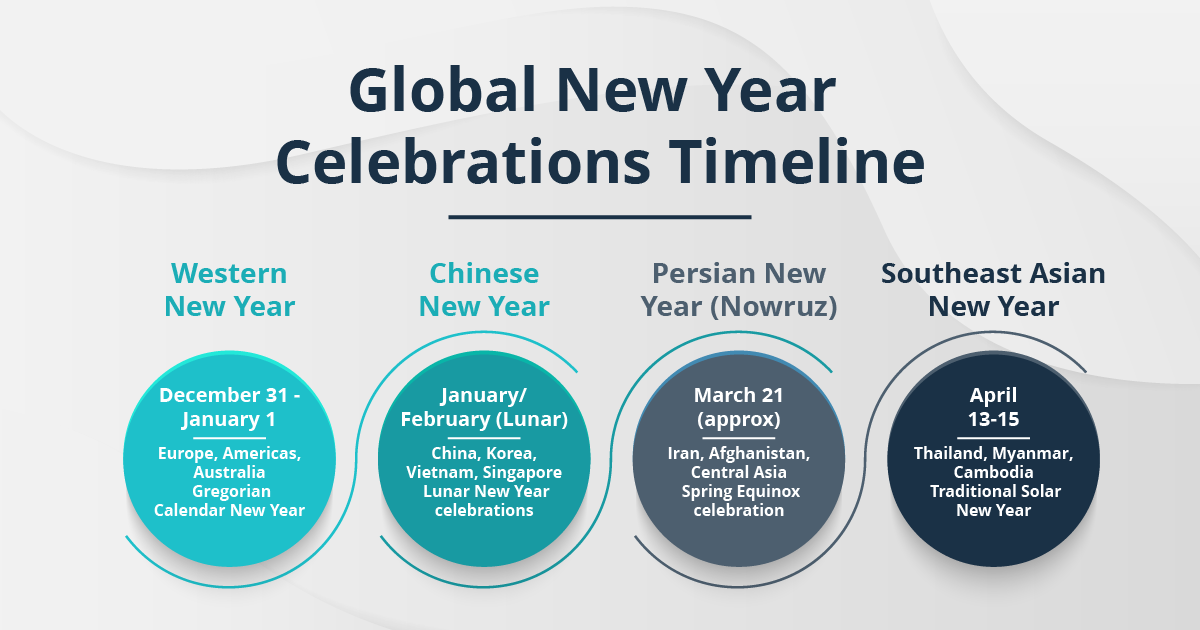
The Importance of Localizing New Year’s Greetings for Global Businesses
Success in the global marketplace requires more than basic translation. Learning a new language opens doors to cultural understanding, and saying “Happy New Year” in different languages demonstrates respect that builds lasting business relationships.
While greetings matter, effective localization also means understanding celebration timing, gift-giving customs, and business etiquette across cultures. This cultural awareness helps companies avoid missteps and create meaningful connections in international markets.
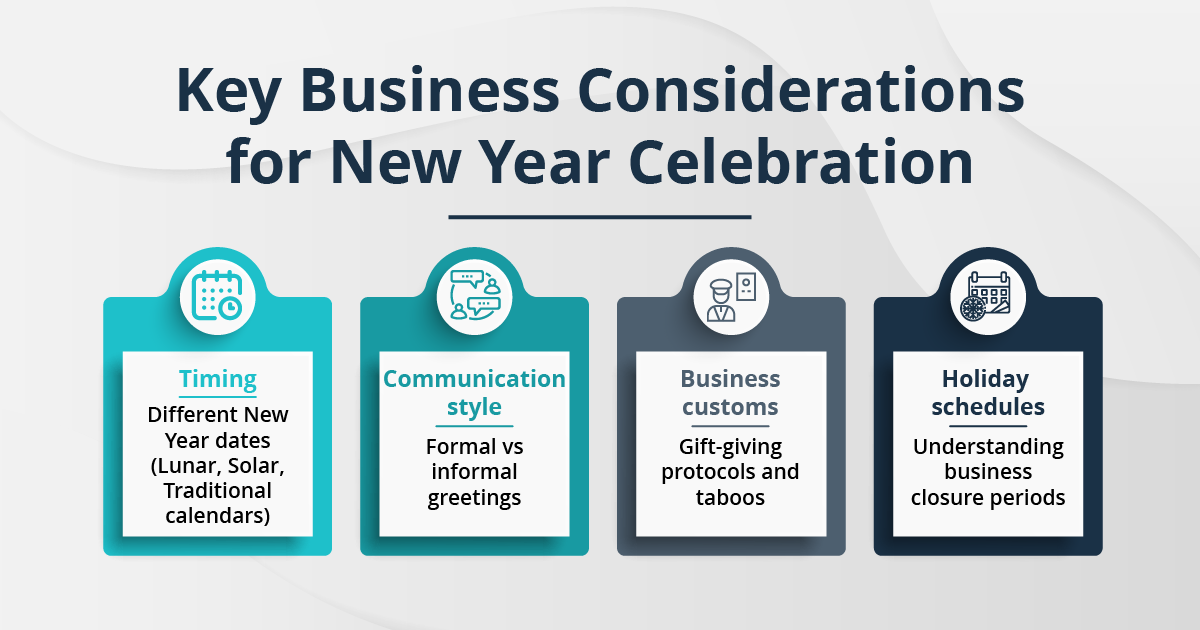
Professional localization services bridge these cultural gaps, ensuring your message resonates authentically with global audiences while strengthening your brand’s international presence.
Laoret For Global Communication Excellence
As your cultural bridge, Laoret provides expert translation and localization across 120+ languages. We help craft authentic New Year greetings, adapt marketing materials, and ensure culturally sensitive communication that maintains your brand voice in every market.
Contact us to enhance your global presence with culturally appropriate communications.






